Hairline Lowering Surgery in Egypt
Search and Compare the Best Clinics and Doctors at the Lowest Prices for Hairline Lowering Surgery in Egypt
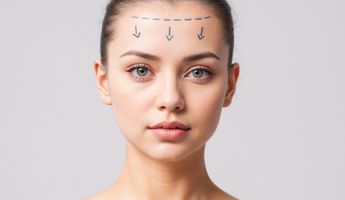
Find the best clinics for Hairline Lowering Surgery in Egypt
With Medijump you can browse 2 facilities offering Hairline Lowering Surgery procedures in Egypt. The cheapest price available is $500 in Cairo. And for the cheapest price globally, prices start from $500 in Egypt.
Hairline Lowering Surgery in Cairo
Price: $ 500
Egypt offers the best prices Worldwide
Price: $ 500
From 146 verified reviews
Mamdouh Mahfouz, 10 September 2020
Well organized hospital with excellent services high caliber staff
Nile Plastic Center, can be found in Al Wosta, Cairo, Egypt and offers its patients Hairline Lowering Surgery procedures as well as 48 other procedures, across 5 different procedure categories. The price of a Hairline Lowering Surgery procedure varies from $500 to $900, and the average price is around $500. Many medical professionals work at the Hospital, with 6 in total, and Nile Plastic Center is accredited by just one known accreditations institute, JCI Accredited
- Home
- Egypt
Compare Before & After Photos of _procedure_photos.phpHairline Lowering Surgery
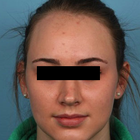
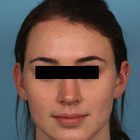
Front view
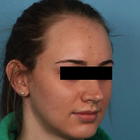
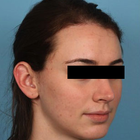
Half-side view
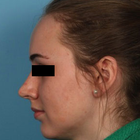
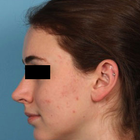
Full-side view
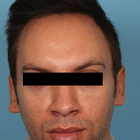
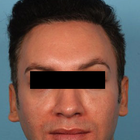
Front view
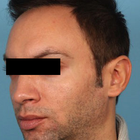
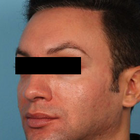
Half-side view
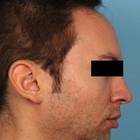
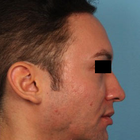
Full-side view
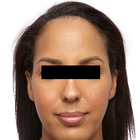
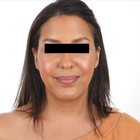
Front view
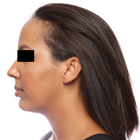
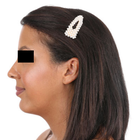
Full-side view
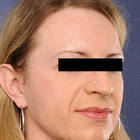
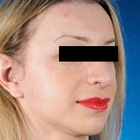
Half-side view
WHY US?
At Medijump, we're making medical easy. You can search, compare, discuss, and book your medical all in one place. We open the door to the best medical providers worldwide, saving you time and energy along the way, and it's all for FREE, no hidden fees, and no price markups guaranteed. So what are you waiting for?

Free

Best Price

Widest Selection

Risk-Free
What you need to know about Hairline Lowering Surgery in Egypt

Also known as Forehead Reduction, Forehead Contouring or Scalp Advancement, Hairline Lowering Surgery allows patients to lower their frontal hairline, often lowering it by up to 2 inches. This procedure aims to reduce the distance between the hairline and the eyebrows, creating a more proportionate appearance. It is most commonly done on women with high hairlines, often the result of hair loss.
The procedure usually takes a couple of hours and is performed under general anesthetic. The new hairline is marked on the forehead, the surgeon will cut away this excess skin and the scalp is lowered to the new hairline. Incisions are strategically placed to minimize the visibility of the scar, making it virtually undetectable as it's covered by hair. It's common to combine hair lowering surgery with Facial Feminization Surgery (FFS). Contact a reputable clinic to ensure the best possible results.
What is the cost of Hairline Lowering Surgery in Egypt?
Before choosing a procedure, it is essential to understand the cost of a Hairline Lowering Surgery in Egypt. The cost might vary depending on a number of factors, including the complexity of the procedure, the surgeon's experience and reputation, and the facility. This approximate cost mostly covers the surgeon's fees, anaesthesia, required medical exams, and hospital or operation centre expenses. This is only a broad estimate, so when accounting for other charges, the exact prices might be higher. The ultimate cost may increase as a result of some factors, including consultation fees, outlays for post-operative care such medications, bandages, and follow-up consultations, as well as potential further surgeries to control complications or enhance outcomes.
It's important to keep in mind that Hairline Lowering Surgery is frequently regarded as a cosmetic surgery and may not be covered by conventional health insurance plans. It is best for the patient to speak with their insurance company before the procedure to understand the specific out-of-pocket costs they would have to pay. Some cosmetic surgery practises may provide financing options or payment plans to help patients manage the cost of the procedure.
What does a Hairline Lowering Surgery Procedure Involve?
Hairline lowering suregry is performed under local or general anesthesia. Before the operation begins, the surgeon draws an anticipated post-operative hairline. The surgery is performed according to this and an incision is made along the hairline. The excessive scalp is cut and removed and the rest is stretched to the new hairline. If this is not enough, tissue expanders are used to make it to the new hairline level. Sutures are used to fix the scalp to the bone and incisions are stitched with bandages being applied over the top.
The medical professional ensures that the incision marks are seamlessly concealed within the hairline, thereby reducing any visible traces of the procedure. Once the operation is concluded, the cut is stitched, and a gentle dressing is applied to shield the wound and diminish inflammation. It's important to understand that the intervention may lead to temporary loss of sensation or minor prickling around the area of incision, however, these symptoms tend to dissipate within several months.
How Long Should I Stay in Egypt for a Hairline Lowering Surgery Procedure?
Hairline lowering surgery is an outpatient procedure that takes around 1.5 to 2 hours to complete. After the effects of the sedation subside, you are allowed to leave. Still, you should aim to stay in Egypt for at least 6 days post-op. During this period, you will have a follow-up with the surgeon to check everything is healing as expected and the sutures are removed, usually after 5 to 6 days - this is when you're given the all-clear to travel home.
What's the Recovery Time for Hairline Lowering Surgery Procedures in Egypt?
It will take between 3 to 6 months to allow the regrowth of hair through the scar, which is important as it hides the scar. Recovery time varies from person to person and some people can get back to their normal routine even after 3 days. At least a week is usually required to get back to normal activities and you may find some swelling and bruising over your forehead in the early days. Pain is managed with painkillers and all symptoms subside after a couple of days. A numbing of the forehead is common and normal feeling usually returns after 3 to 5 days.
What sort of Aftercare is Required for Hairline Lowering Surgery Procedures in Egypt?
Aftercare following a Hairline Lowering Surgery is crucial to ensure a smooth recovery and minimization of potential complications. The following are some useful aftercare tips:
- Use icepacks in the initial days to help with inflammation and bruising. Ice is effective in reducing swelling immediately.
- Do not take anti-inflammatory medicines as they increase bleeding tendency.
- Continue taking painkillers prescribed by your doctor.
- Try not to look upwards and avoid frowning as this can be damaging to your stitches.
- Do not lift heavy objects.
- Keep your head a little higher whilst resting.
- Ensure that tight bandages have been applied over the wounds and replace regularly with fresh ones.
- Do not take a bath when the bandages are still intact as a wet bandage can be the cause of infection.
- Avoid strenuous activities such as the gym, running, swimming, etc. for at least 2 weeks after the surgery.
- Do not put hair bands or any other accessory on your head for some time.
- Do not drink or smoke as it will hinder the healing process.
- Ensure you have a diet rich in vitamin C as it makes the healing process faster.
What's the Success Rate of Hairline Lowering Surgery Procedures?
A Hairline Lowering Surgery frequently yields remarkable results, with a significant number of individuals expressing contentment with their post-procedure appearance. Nevertheless, outcomes may differ based on the medical institution or medical professional involved. With the possibility of the scar being visible with certain hairstyles, Hair Transplantation could be applied to further reduce the appearance of any scarring.
Notably, while Hairline Lowering Surgery tends to yield positive results for the majority, it might vary on an individual basis. Factors such as your unique hair growth pattern, scalp flexibility, and the overall state of your hair condition could all influence your final outcome. Therefore, maintaining ongoing communication with your medical professional and adhering to their recommendations both pre and post-treatment is crucial to optimising your results.
Are there Alternatives to Hairline Lowering Surgery Procedures in Egypt?
Surgery is not the only option. Consider these methods before opting for surgical treatment:
- Grafting hair (Hair Transplant): with this technique more hairs are grafted along your hairline instead of lowering it. This is also used for the thickening of your hair. A new layer of hair is grafted below your natural hairline. 1200 to 2400 hair strands are grafted. These hairs fall out after 3 weeks then regrow in 4 months. 10 months is required before you'll see the true longterm result. This is a non-surgical alternative to hairline lowering surgery and it is found to be very effective in reducing the size of your forehead.
- Hairstyling: You can hide a big forehead by styling your hair in such a manner. Of course, this is a non-surgical method. Choose those hairstyles which cover your forehead the most. Some people will use headscarves and hats to also hide their forehead.
What Should You Expect Before and After the Procedure?
A fundamental phase before proceeding with a Hairline Lowering Surgery in Egypt is the preliminary discussion with your medical expert. This interaction involves a comprehensive health evaluation, scrutiny of your medical background, and discussion of any medications you currently use by your expert. They will also perform an exhaustive examination of your scalp and hairline. This evaluation offers the medical professional an opportunity to decide if you're the perfect fit for the process. Moreover, they will deliberate on your anticipation and cosmetic objectives, ensuring they align with the realistic outcomes offered by Hairline Lowering Surgery.
Feeling slight discomfort, swelling, and bruising in the treated part is a normal sensation post a Hairline Lowering Surgery. It is vital to abide by the directives of your medical professional, which may involve keeping your cranium elevated and avoiding rigorous activities to manage these symptoms. For the initial few days succeeding the procedure, rest is essential, providing your body with time to recuperate. Your medical expert might recommend pain-relief therapy for discomfort management. Usually, stitches are taken out approximately one week after the surgery, and by this time, most people can get back to their work and routine activities. Regular follow-up sessions with your medical expert should be expected during the recovery span. These sessions offer your expert a chance to track your recovery progress, manage any prospective obstacles, and provide support during your healing period.
What are the Risks and Side Effects of Hairline Lowering Surgery in Egypt?
While side effects are usually minimal, they are important to think about. After the Hairline Lowering Surgery, you might feel some short-term side effects like swelling, pain, and bruising around the spot where you had the surgery. This is normal during healing and usually goes away in a few days. Numbness or tingling near the cut is also common after a Hairline Lowering Surgery. This happens because small nerves can be affected during the procedure. As your body recovers, these feelings should slowly lessen and finally go away.
Some people might notice hair loss, usually temporary, around the cut. This happens due to the stress on the hair roots during the procedure. However, this kind of hair loss usually doesn't last more than a few months, and new hair will start to grow. More serious risks include infection, heavy bleeding, or bad reactions to the anesthesia. While these problems are rare, they need immediate medical help. To reduce these risks, it's crucial to pick a good surgeon and follow their before and after care instructions.
Whilst the information presented here has been accurately sourced and verified by a medical professional for its accuracy, it is still advised to consult with your doctor before pursuing a medical treatment at one of the listed medical providers
No Time?
Tell us what you're looking for and we'll reachout to the top clinics all at once
Enquire Now

Popular Procedures in Egypt
Prices Start From $136

Prices Start From $4

Prices Start From $126

Recommended Medical Centers in Egypt for Hairline Lowering Surgery

- Interpreter services
- Translation service
- Religious facilities
- Medical records transfer
- Medical travel insurance
- Health insurance coordination
- TV in the room
- Safe in the room
- Phone in the room
- Private rooms for patients available

- Interpreter services
- Translation service
- Religious facilities
- Medical records transfer
- Medical travel insurance
- Health insurance coordination
- TV in the room
- Safe in the room
- Phone in the room
- Private rooms for patients available

- Interpreter services
- Translation service
- Religious facilities
- Medical records transfer
- Medical travel insurance
- Health insurance coordination
- TV in the room
- Safe in the room
- Phone in the room
- Private rooms for patients available

- Interpreter services
- Translation service
- Religious facilities
- Medical records transfer
- Medical travel insurance
- Health insurance coordination
- TV in the room
- Safe in the room
- Phone in the room
- Private rooms for patients available

- Interpreter services
- Translation service
- Religious facilities
- Medical records transfer
- Medical travel insurance
- Health insurance coordination
- TV in the room
- Safe in the room
- Phone in the room
- Private rooms for patients available

- Interpreter services
- Translation service
- Religious facilities
- Medical records transfer
- Medical travel insurance
- Health insurance coordination
- TV in the room
- Safe in the room
- Phone in the room
- Private rooms for patients available

- Interpreter services
- Translation service
- Religious facilities
- Medical records transfer
- Medical travel insurance
- Health insurance coordination
- TV in the room
- Safe in the room
- Phone in the room
- Private rooms for patients available

- Interpreter services
- Translation service
- Religious facilities
- Medical records transfer
- Medical travel insurance
- Health insurance coordination
- TV in the room
- Safe in the room
- Phone in the room
- Private rooms for patients available

- Interpreter services
- Translation service
- Religious facilities
- Medical records transfer
- Medical travel insurance
- Health insurance coordination
- TV in the room
- Safe in the room
- Phone in the room
- Private rooms for patients available

- Interpreter services
- Translation service
- Religious facilities
- Medical records transfer
- Medical travel insurance
- Health insurance coordination
- TV in the room
- Safe in the room
- Phone in the room
- Private rooms for patients available
Hairline Lowering Surgery in and around Egypt
About Egypt
Egypt is a spectacular fusion of splendid beaches, diverse wildlife, delectable cuisine, and a consistently sunny climate. Its historical significance is rooted deeply in Ancient Egypt - one of the most influential and fascinating civilizations to have ever existed. Journey back into the corridors of time as you visit Egypt's famous architectural wonders such as the iconic Pyramids of Giza and the historically rich Valley of the Kings.
With every twist and turn along the River Nile, brace yourself for a captivating journey into the past, and lose yourself in the labyrinth of bustling bazaars. Egypt invites you to revel in the architectural grandeur of some of its most renowned temples, be awed by the commanding presence of the Sphinx, and acquaint yourself with the distinct Nubian culture. Egypt presents an intriguing mélange of timeless history, vibrant cultures and stunning natural beauty.
One of the unique advantages of considering cosmetic surgery in Egypt is that it allows you to pair your medical trip with a satisfying holiday, all at a price that would typically cover only the surgery in many developed nations. Many top-notch clinics are concentrated in Cairo, the capital. However, there are also excellent private medical facilities in Heliopolis, Zamalek, Maadi, and Gizeh. Eleven of these are accredited by the Joint Commission International (JCI), vouching for their high quality of services.
The bulk of the medical tourists in Egypt come from other Arabic-speaking nations and across the African continent, drawn in by the affordability and expertise on offer. Particularly, Hairline Lowering Surgery procedures have gained notable popularity, further consolidating Egypt's position as a favorable destination for medical tourism.
Popular Parts of Egypt
Currently, Egypt is home to over 95 million inhabitants, securing its place as the most populous country in North Africa and standing third in terms of population across Africa. With its majestic historical landmarks, the sweeping expanse of the Nile, and the captivating allure of its deserts, Egypt extends an open invitation to all who seek to explore the grandeur of the ancient world. This fusion of history and natural beauty offers a unique landscape that continues to enchant millions of global citizens, making Egypt a must-visit destination.
- Cairo is the capital of Egypt as well as the largest city in the country and it is a perfect blend of ancient and modern culture. Visitors from all over the world come to see the Great Pyramid of Giza, the iconic Sphinx, or the magnificent tomb of Tutankhamun. Modern attractions such as its countless museums and busy markets are also popular with tourists.
- Luxor has frequently been called the world’s greatest open-air museum. Tourists can visit the Valley of the Kings, wander around the Temple of Dier el-Bahari, or discover the beauty of the Karnak Temple. Not only home to the extraordinary temple ruins of ancient Thebes, but this city also lies in a breathtaking setting of the Nile River and astonishing desert. Tourists should complete their visit to this beautiful city by taking a sunset felucca cruise on the Nile River.
- Alexandria is a major economic center and the second-largest city in Egypt. The city has an impressive and interesting past, which began when Alexander the Great founded the city around 331 BC and it was home to the Pharos and the Great Library. Now, although the legendary buildings have disappeared, tourists can still learn about its past from the Alexandria National Museum, Bibliotheca Alexandrina, Kom el-Dikka, and Fort Qaitbey. Tourists can also relax in The Corniche, a scenic promenade overlooking the beautiful sea.
- Aswan is located in the south of Egypt. It is part of the UNESCO Creative Cities Network in the craft and folk art category. The city is a major destination for cruise boats on the River Nile, making it a favorite place for tourists. The local market in this city is known to be a superb place for holiday shopping, especially for those looking for fresh spices. The most popular attractions in or around the city are Sharia as-Souq, Nubian Museum, Unfinished Obelisk, Abu Simbel, and Philae Temple.
- Sharm El Sheikh is situated on the coastal strip along the Red Sea. The city is the perfect beach gateway and is known for its outstanding beaches and some of the best dive spots in the world with a stunning coral reef. Dive into the crystal clear water and encounter schools of sharks, moray, and barracuda. Other than the underwater scenery, tourists can explore the Sinai desert by camel, take a tour to Saint Catherine’s Monastery, or relax in the Red Sea Resort.
Weather and Climate in Egypt
Characterized mainly by a sweltering desert climate, Egypt remains significantly dry throughout, apart from its northern areas along the Mediterranean Sea. These northern regions break from the norm, being comparatively more humid and receiving the lion's share of the country's annual rainfall, offering a contrasting picture to Egypt's otherwise arid landscape.
Summer in Egypt exhibits average temperatures hovering around 35 °C, but there can be instances where temperatures escalate beyond 40 °C. These extreme temperature spikes are often accompanied by increased levels of humidity, intensifying the overall heat experience during the country's summer months.
Winter ushers in a pleasant climate, making it a popular time for tourists, although it results in crowded tourist spots and slightly higher costs. Cities like Alexandria may receive occasional showers, contributing to increased dampness during this season.
Winter is recognized for being Egypt's breeziest season. During this time, daytime temperatures typically float around a comfortable 20°C. When night descends, the temperature can drop further towards 10°C, introducing a gentle chill. Mindfully sandwiched between the country's dominant hot desert climate, this period offers a refreshing contrast as it unveils Egypt's mild winter chill.
Getting Around in Egypt
There are several international airports in Egypt: Cairo International Airport, Burg Al Arab Airport, Hurghada Airport, Luxor Airport, Marsa Alam Airport, and Sharm El Sheikh International Airport. The main and the busiest airport is Cairo International airport which serves both domestic and international flights to Asia and Europe. The airport is the hub for Egypt Air, Egypt Air Express, and Nile Air. Budget airlines such as Flynas and FlyEgypt also operate flights from this airport.
Egypt has a dependable and efficient public transport network and tourists can travel by rail which covers a limited network of routes. Trains travel is the best option for long-distance travel and there are air-conditioned trains that offer a more comfortable option. But if you are looking for a cheaper alternative, a non-air-conditioned economy class is also available.
If you're looking for a budget-friendly and swift mode of travel, buses present an ideal choice. Primarily employed for longtrips, these buses conveniently link major cities across the country. Tickets for these bus journeys can be conveniently secured at the Cairo Gateway bus terminal, making it an easily accessible option for tourists interested in exploring the breadth of Egypt.
Taxis and Uber are available in most cities, providing easier travel for tourists. In Cairo, the taxis are painted white and black. In Alexandria, the taxis are painted orange and black. The taxis are generally metered but there are also taxis that will refuse to use the meters. Tourists should insist on using the meter or agree on a fare before getting into one. Long-distance group taxis are also available and are relatively cheap and be sure to agree on the fares and bargain if necessary.
Tourist Visas in Egypt
Every traveler planning a visit to Egypt needs a visa, barring citizens from visa-exempt countries such as Bahrain, Hong Kong, and Saudi Arabia who are allowed to stay for up to 90 days without one.
A Visa-on-Arrival service, which simplifies the process, is available to several nationalities, including Australia, Japan, Russia, and all European Union citizens. This Visa-on-Arrival is valid for an initial 30 days but can be extended for another 30 days if needed. These visa policies aim to facilitate easier and regulated travel to and from Egypt.
For citizens of 46 countries, which includes major nations such as the United States, Canada, and the United Kingdom, an electronic visa is easily available. The e-Visa, valid for a 30-day period, can conveniently be applied for and obtained online via the official Egyptian government's website.
For all other nationals who don't fall under the visa exemption agreement, visa on arrival, or electronic visa categories, a visa application must be filed at their nearest Egyptian embassy or consulate. This makes the process of securing a visa to Egypt more streamlined and accessible, ensuring a smooth travel experience for visitors.
Additional information about the Visas:
- All visitors to Egypt must have a passport valid for at least six months beyond their intended date of departure from Egypt.
- Visitors who obtain a visa on arrival or an e-Visa must pay a visa fee. The visa fee varies depending on your nationality.
- Visitors who apply for a visa at an Egyptian embassy or consulate may also need to provide additional documentation, such as a proof of onward travel or a letter of invitation.
Additional Information
- Local Currency: The local currency is the Egyptian pound (EGP). 1 USD will get you 30.90 EGP.
- Money & Payments: ATMs are available in major cities, but if you are planning to go to remote places, prepare to bring cash with you. Credit cards are accepted in the midrange and high-end restaurants, hotels, and shops. Tipping is generally expected everywhere.
- Local Language: There are various languages spoken in Egypt. The official language is Classical Arabic but the most widely spoken language is Egyptian Arabic. Since the county was occupied by the British from 1882 to 1952, many people will speak English.
- Local Culture and Religion: Islam is the state religion of Egypt. There are also small groups of Christian and Jews.
- Public Holidays: Egypt celebrates religious and national holidays including Coptic Easter Sunday, Christmas Day, End of Ramadan, and Revolution Day.
Popular Searches
- Plastic Surgery in Thailand
- Dental Implants in Thailand
- Hair Transplant in Thailand
- Breast Augmentation Thailand
- Gastric Sleeve in Thailand
- Gender Reassignment Surgery in Thailand
- Laser Hair Removal in Bangkok
- Botox in Bangkok
- Dermatology in Bangkok
- Breast Augmentation in Bangkok
- Coolsculpting in Bangkok
- Veneers in Turkey
- Hair Transplant in Turkey
- Rhinoplasty in Turkey
- Stem Cell Therapy in Mexico
- Rhinoplasty in Mexico
- Liposuction in Mexico
- Coolsculpting in Tijuana
- Rhinoplasty in Korea
- Scar Removal in Korea
- Gastric Sleeve in Turkey
- Bone Marrow Transplant in India
- Invisalign in Malaysia
- Plastic Surgery in the Dominican Republic
- Tummy Tuck in the Dominican Republic
- Plastic and Cosmetic Surgery in Poland
- Rhinoplasty in Poland
- Hair Implant in Poland
- Dental Implants in Poland
- IVF in Turkey

